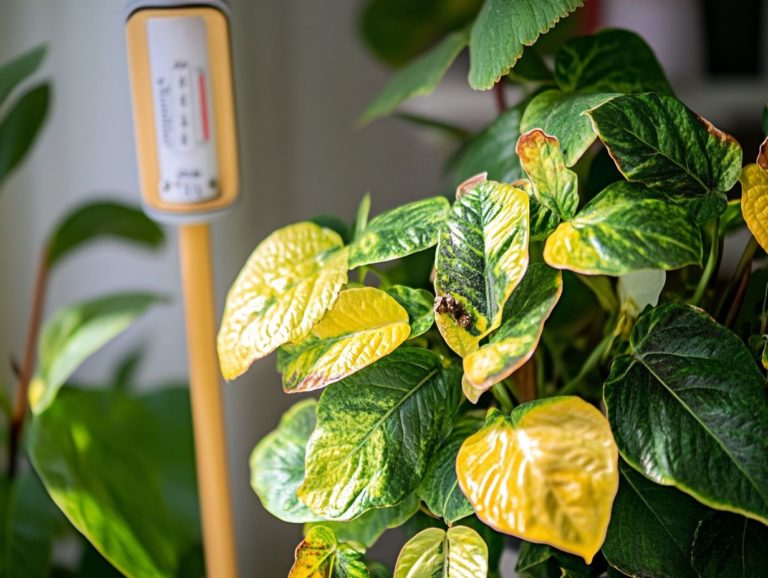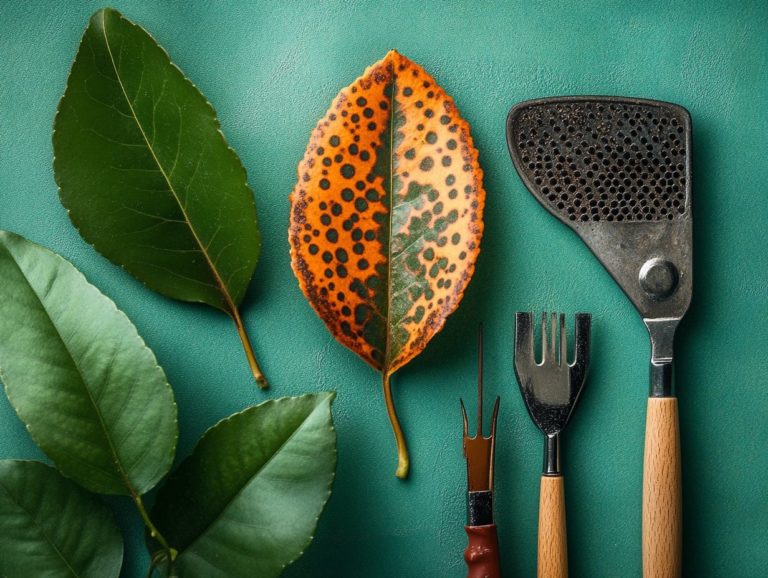Understanding Indoor Plant Pest Resistance
Indoor plants can add life and beauty to your home, yet they often face the ongoing threat of pests.
Knowing why pest resistance matters can keep your plants healthy and happy. This article explores the significance of pest resistance, identifies common indoor pests, and examines what affects a plant s ability to fend off infestations.
This article also presents effective strategies to enhance pest resistance and recommends resilient plant varieties, ensuring your indoor garden thrives for years to come.
Contents
- Key Takeaways:
- The Importance of Pest Resistance in Indoor Plants
- Common Indoor Plant Pests
- Factors Affecting Pest Resistance
- Creating a Pest-Resistant Indoor Garden
- Methods for Improving Indoor Plant Pest Resistance
- Choosing Pest-Resistant Indoor Plants
- Maintaining Pest Resistance in Indoor Plants
- Frequently Asked Questions
- What is indoor plant pest resistance?
- Why is understanding indoor plant pest resistance important for home gardening?
- How can I determine if a plant has good pest resistance?
- What are some common indoor plant pests?
- What are some natural ways to improve indoor plant pest resistance?
- Can indoor plant pest resistance be improved through optimal growing conditions?
Key Takeaways:
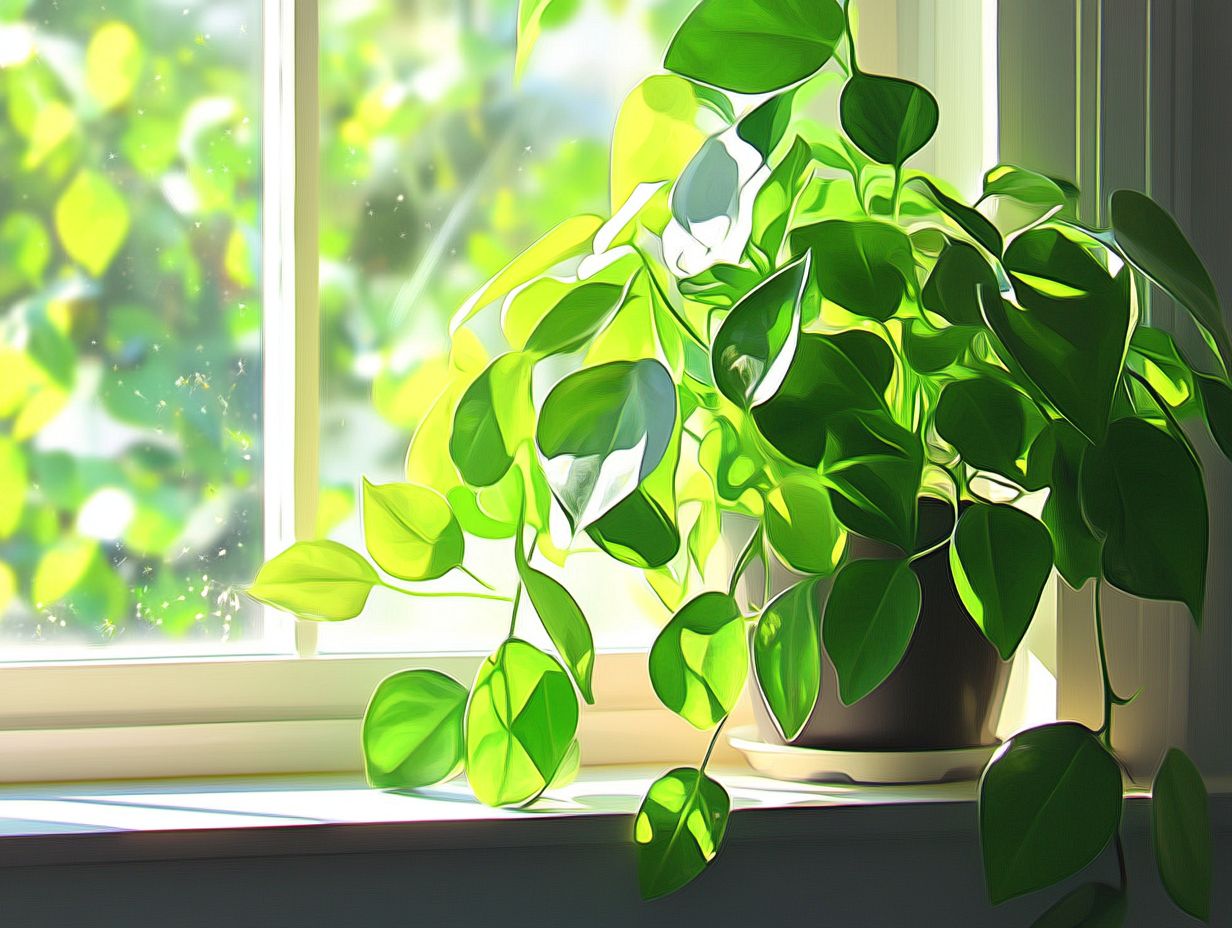
Understanding the importance of pest resistance helps keep your plants thriving.
Identifying and preventing common pests is essential for a healthy indoor garden.
Factors like environment and plant care impact pest resistance, and various methods can help improve it.
The Importance of Pest Resistance in Indoor Plants
Pest resistance is crucial for healthy indoor plants. It significantly lowers the risk of infestations that can harm your beloved houseplants.
Experts like Madeline Buiano and Rich Christakes emphasize selecting disease-resistant varieties, such as the snake plant, ZZ plant, and spider plant. This helps elevate your plant care and promotes sustainability in your indoor gardening efforts.
By understanding pest control methods, you can enjoy healthier plants and a more rewarding gardening experience.
Why is Pest Resistance Important?
Pest resistance is vital in indoor gardening, protecting your plants from common threats like spider mites and other pests, which ensures their longevity and well-being.
When kept indoors, plants can be especially vulnerable to pests that thrive in controlled environments. This makes pest resistance essential for maintaining their vitality.
Infestations not only affect growth but can also hinder the process plants use to make food, called photosynthesis. Reducing pest-related losses translates into significant economic benefits, allowing you to save on costly treatments and replacements.
By understanding how environmental factors like humidity and temperature influence your plants, you can cultivate resilience, enabling them to withstand potential threats while fostering a healthier indoor ecosystem.
Common Indoor Plant Pests
Common indoor plant pests like spider mites, aphids, and mealybugs can seriously jeopardize the health of your houseplants. It’s essential to identify and tackle these pest infestations quickly to help your plants thrive.
Identification and Prevention
Identifying and preventing common indoor pests is crucial for effective pest control and the overall health of your plants.
Improving your pest-fighting skills starts with proper identification techniques. For example, regularly checking leaves for discoloration or webbing can help you spot an invasion early. Once you ve identified the issue, focus on preventive measures ensuring your plants have adequate space and airflow can deter many pests. Using natural remedies like neem oil provides an organic solution, while chemical options can be effective for severe infestations.
Finding the right balance between these strategies is essential. By doing so, you can protect your green companions from harm and ensure they flourish beautifully.
Factors Affecting Pest Resistance
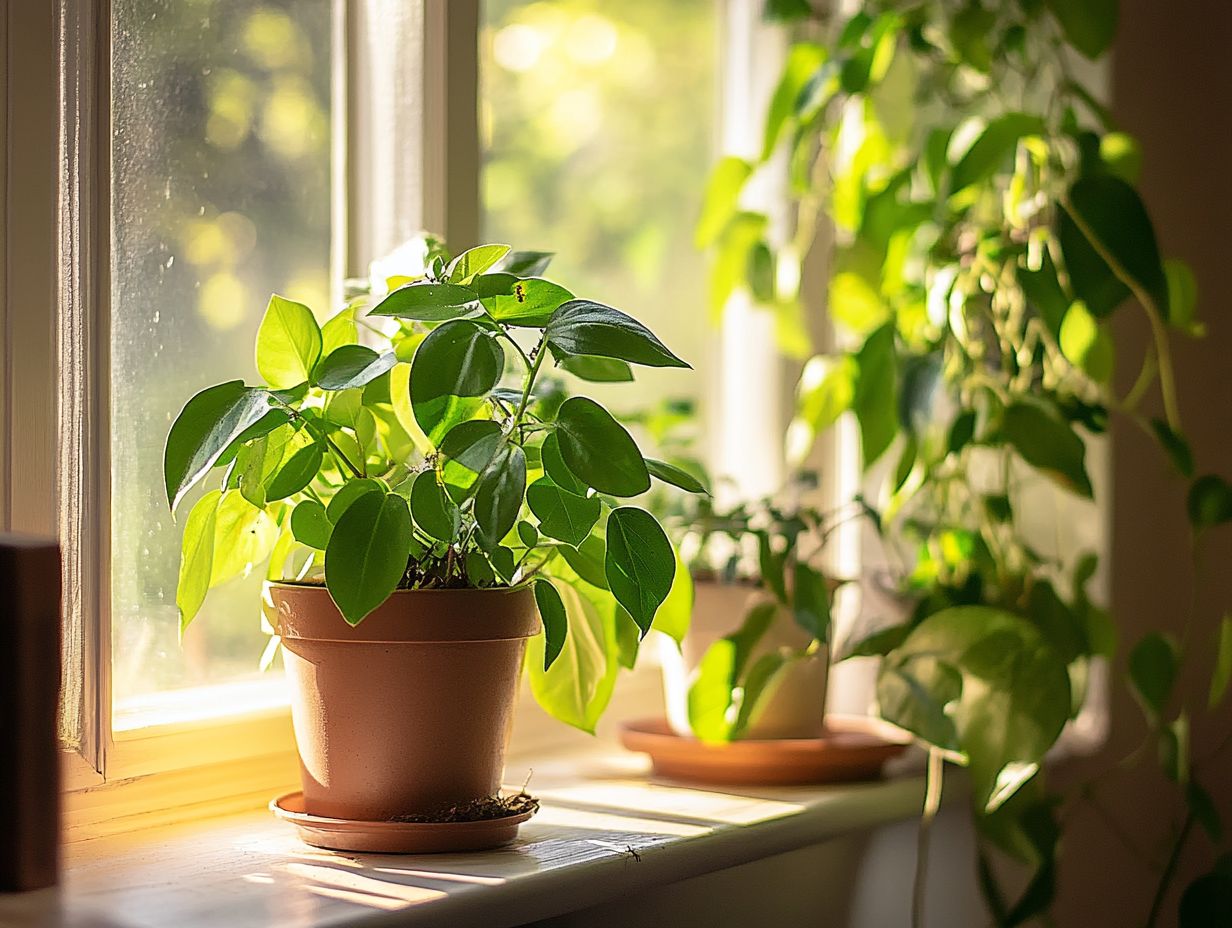
Numerous factors influence pest resistance in your indoor plants. These include the growing conditions you create, the environmental factors at play, and the specific care practices you implement as an indoor gardener.
Each of these elements can either enhance or hinder a plant’s ability to fend off pests.
Creating a Pest-Resistant Indoor Garden
Creating a pest-resistant indoor garden is not just about choices; it’s also about understanding your plants’ needs.
Environmental and Plant-Specific Factors
Environmental and plant-specific factors are essential in determining the pest resistance of indoor plants. They significantly influence their susceptibility to pest problems and diseases.
For example, light levels can have a profound impact on a plant’s overall health, which in turn affects its ability to fend off pests. Understanding indoor plant pests and their impact is crucial. Plants like succulents, which thrive in bright light, typically show greater resistance to common pests than those relegated to low-light conditions.
Moisture levels are equally crucial. Overly damp environments can invite harmful insects like spider mites and aphids, while well-drained soil promotes stronger root systems and healthier foliage.
Understanding how species such as snake plants or pothos react to variations in light and moisture can help you cultivate a more resilient indoor garden that stands strong against pests!
Methods for Improving Indoor Plant Pest Resistance
To enhance the pest resistance of your indoor plants, consider employing a range of control methods. Utilizing natural toxins and insecticidal soap can dramatically minimize the likelihood of pest problems while promoting the overall health of your plants.
By integrating these approaches, you’ll create a thriving indoor garden that is resilient against unwanted visitors.
Natural and Chemical Solutions
Natural and chemical solutions present effective strategies for managing unwanted pests in your indoor garden. They enable you to choose the best pest control methods tailored to your specific needs.
Natural solutions often include methods like introducing beneficial insects, using natural insect sprays made from plants, or applying organic repellents. These approaches are generally more environmentally friendly and safe for indoor use.
Chemical solutions can provide quick results and specifically target infestations, but it’s crucial to handle them with care, as they may pose risks to your health and the surrounding ecosystem.
By integrating both natural and chemical approaches into a comprehensive pest management plan balancing the immediate effectiveness of chemical options with the long-term advantages of natural alternatives you can tackle pest issues effectively while minimizing any negative impacts on your growing environment.
Choosing Pest-Resistant Indoor Plants
Selecting pest-resistant indoor plants is vital for cultivating a thriving indoor garden. By opting for resilient varieties like the ZZ plant and snake plant, you can naturally fend off common pests while enjoying a healthier, more vibrant green space.
Recommended Species and Varieties
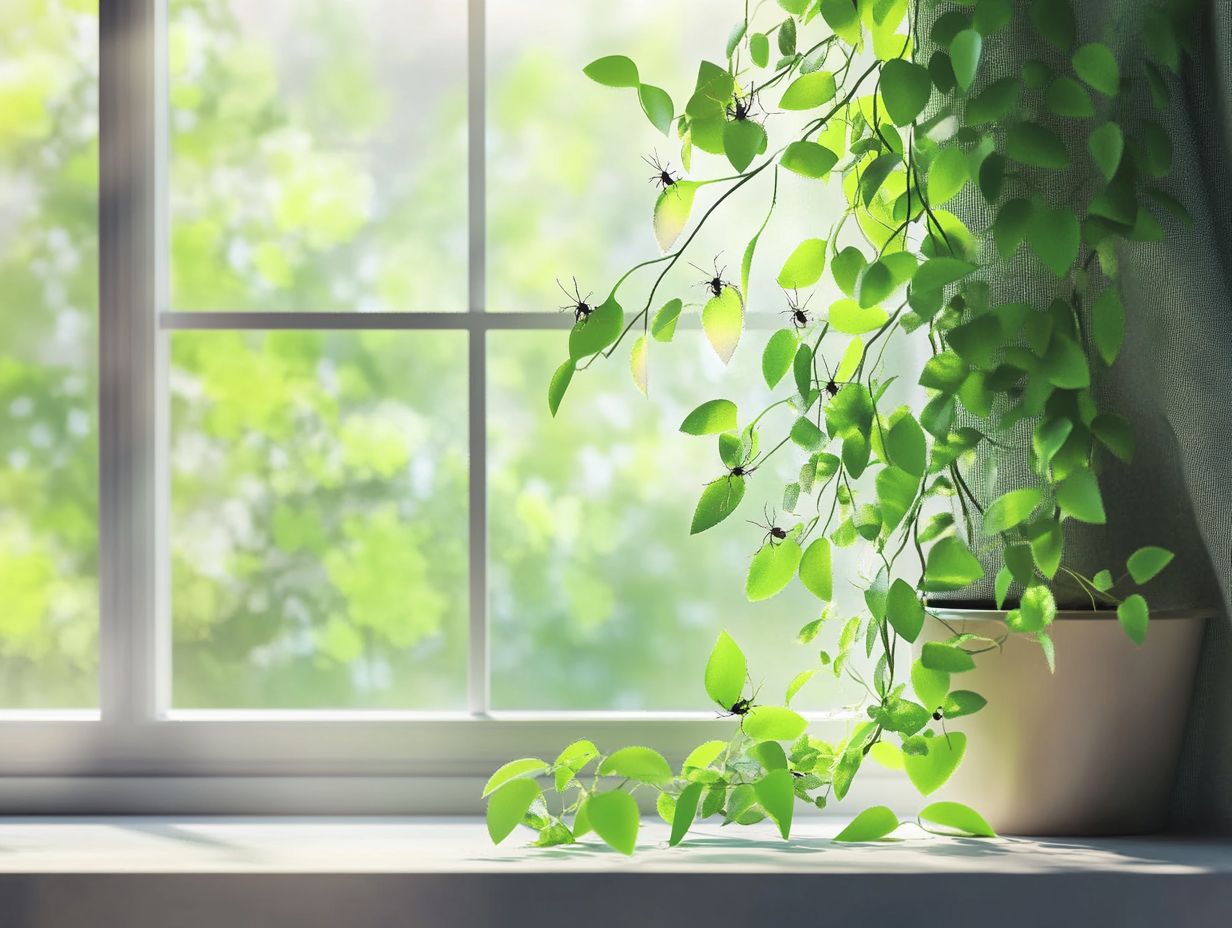
Consider incorporating some recommended pest-resistant plants into your space, such as aloe vera, spider plants, and a variety of Bromeliads. These selections are not only resilient against common indoor pests but also enhance the aesthetic appeal of your home.
Aloe vera thrives in bright light and requires minimal watering, making it an ideal choice for those new to gardening. The spider plant, with its graceful arching leaves and charming ‘babies,’ prefers indirect sunlight and adapts well to various potting mixes. Meanwhile, Bromeliads bring a burst of vibrant color, flourishing in bright, indirect light with less frequent watering needs.
To elevate your indoor gardening setup, think about placing these plants in decorative pots on your windowsills or hanging them in macram planters. This approach not only adds visual interest but also helps keep those pesky pests at bay.
Maintaining Pest Resistance in Indoor Plants
Maintaining pest resistance in your indoor plants involves following best practices in pest control methods. This ensures that your houseplants thrive, remaining healthy and vibrant in your home gardening environment.
Best Practices for Long-Term Pest Control
Best practices for pest control are essential for your houseplants. They help your indoor garden thrive without pests.
Regular inspections are key! By systematically checking for signs of infestation, you can address issues before they spiral out of control.
Proper watering techniques are vital. Too much water can lead to dampness, attracting pests.
Choosing pest-resistant plants adds extra protection against pests. Together, these methods cultivate a healthy ecosystem, supporting your plants’ vitality while reducing the risk of infestations.
Frequently Asked Questions
What is indoor plant pest resistance?
Indoor plant pest resistance refers to a plant’s natural ability to withstand or repel attacks from pests like insects, mites, and diseases.
Why is understanding indoor plant pest resistance important for home gardening?
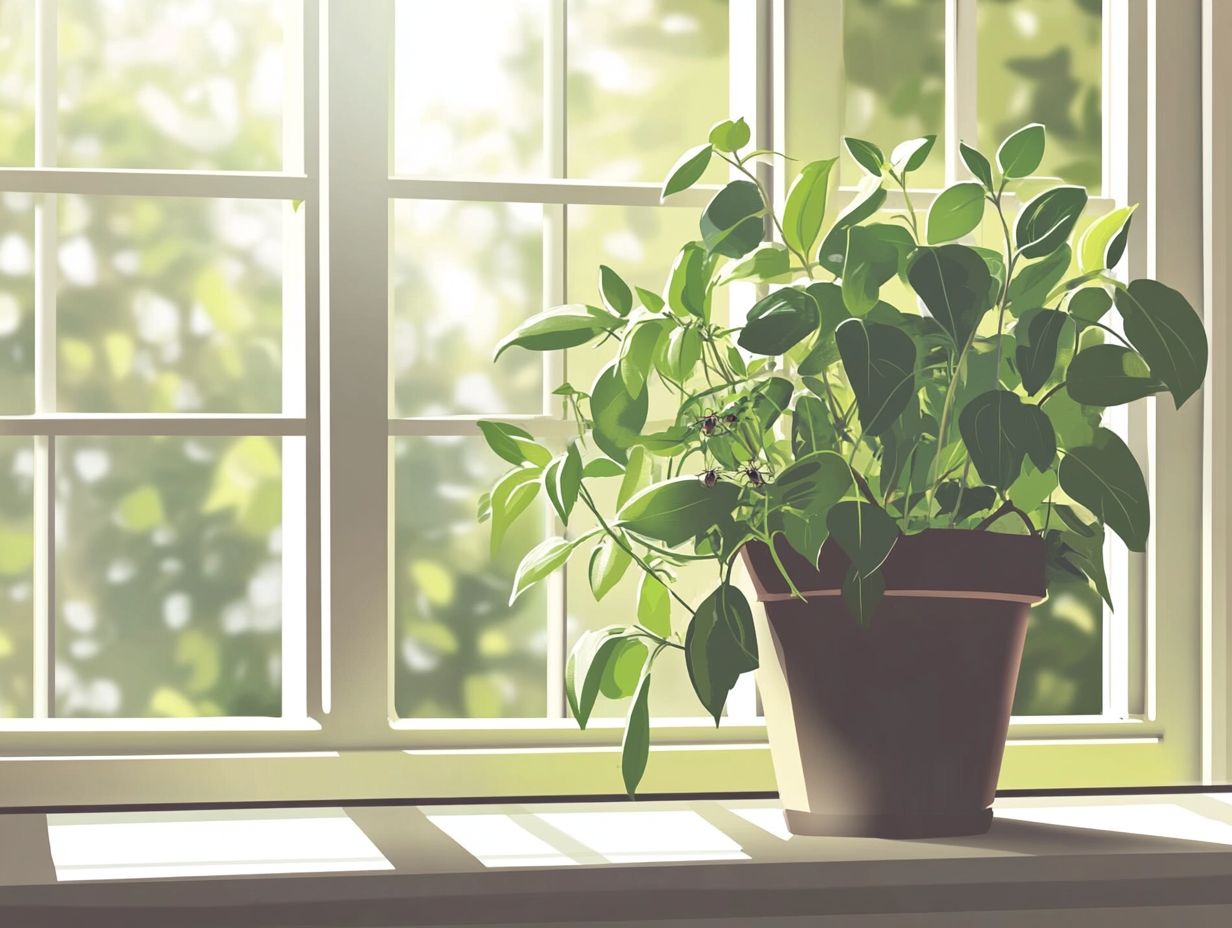
Understanding indoor plant pest resistance helps you choose the right plants for your indoor garden, minimizing the need for harmful pesticides.
How can I determine if a plant has good pest resistance?
You can assess a plant’s pest resistance by researching its characteristics and defenses, as well as its history of withstanding common indoor pests.
What are some common indoor plant pests?
Common indoor plant pests include aphids, mealybugs, spider mites, and whiteflies. Diseases like powdery mildew and root rot can also affect indoor plants.
What are some natural ways to improve indoor plant pest resistance?
Natural ways to boost indoor plant pest resistance include proper watering and fertilization, ensuring adequate sunlight and air circulation, and using methods like beneficial insects or homemade pest repellents.
Can indoor plant pest resistance be improved through optimal growing conditions?
Yes! Indoor plant pest resistance can improve with proper care, such as regularly cleaning and inspecting plants, providing optimal conditions, and utilizing natural pest control methods.



